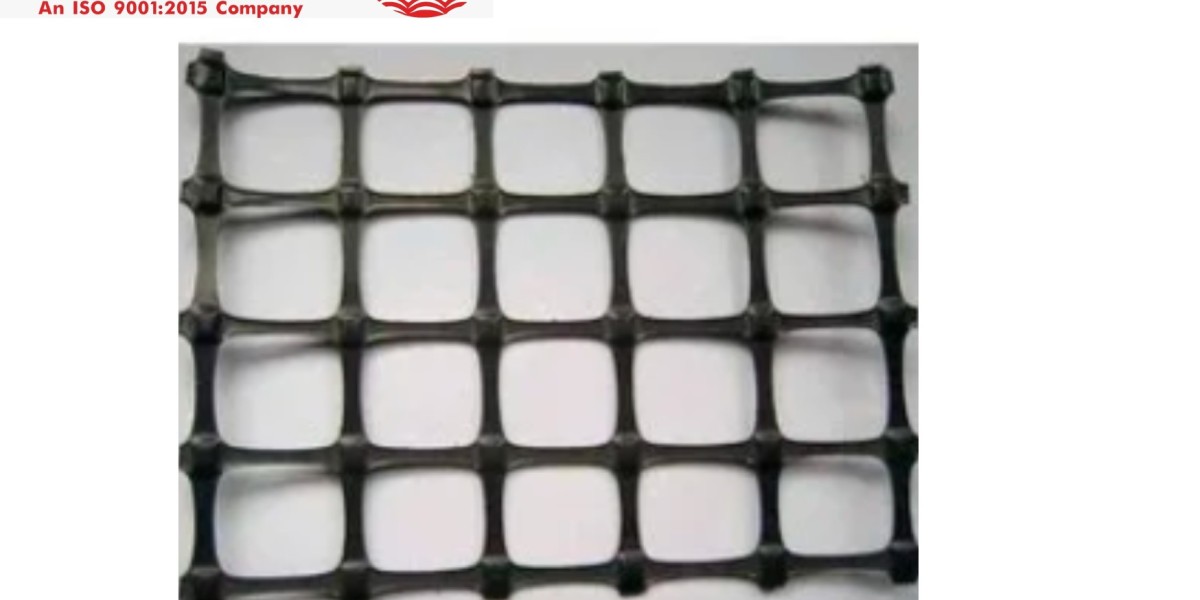In modern infrastructure projects, ensuring the durability and stability of roads and retaining walls is crucial for both safety and cost-effectiveness. One technology that has revolutionized the field of civil engineering is the Uniaxial Geogrid for road construction. This highly advanced material is engineered to improve the structural integrity of roads, highways, and retaining walls by providing superior load-bearing capacity and resistance to lateral movement. The use of uniaxial geogrids has become an industry standard, particularly in projects where soil reinforcement is critical to the success of the structure.
What is Uniaxial Geogrid?
A Uniaxial Geogrid for road construction is a high-strength polymer mesh, usually made from polyethylene or polypropylene. Unlike biaxial geogrids, which distribute loads in two directions, uniaxial geogrids are designed to provide strength in a single direction. This characteristic makes them especially useful in applications where long-term reinforcement is required, such as road foundations, embankments, and retaining walls.
The design of a uniaxial geogrid consists of closely spaced, high-tensile ribs that stretch in one direction, forming a grid pattern. The primary purpose of these grids is to distribute loads and reinforce weak soils. By providing a stable foundation, uniaxial geogrids prevent soil movement and reduce the likelihood of road deformation, which can lead to cracks, potholes, and other structural issues.
Benefits of Using Uniaxial Geogrids in Road Construction
The use of uniaxial geogrids for road construction offers several key benefits, particularly in projects where soil stability is a concern. One of the primary advantages is that they help distribute the load over a larger area, reducing the pressure on the underlying soil and minimizing the risk of settlement or erosion. This is particularly important in areas with poor soil conditions, where traditional road-building materials may not provide sufficient support.
Another significant benefit of Uniaxial geogrid for road construction is that they extend the lifespan of roads by preventing deformation. Roads are subject to heavy traffic loads, and without proper reinforcement, the subgrade soil can shift, leading to structural failure. Uniaxial geogrids help to stabilize the soil and prevent lateral movement, reducing the risk of cracking or sinking over time. This not only improves the safety of the road but also reduces maintenance costs.
In addition to enhancing the stability of roadways, uniaxial geogrids are also environmentally friendly. Because they allow for more efficient use of local materials, they reduce the need for transporting additional fill or aggregate to the construction site. This helps to lower the carbon footprint of the project while also reducing costs.
Uniaxial Geogrid Installation: Best Practices
Proper Uniaxial Geogrid installation is essential to ensure that the geogrid performs as intended. The installation process typically begins with site preparation, which involves grading the area and removing any debris or unsuitable materials. Once the site is prepared, the geogrid is rolled out over the subgrade soil. The geogrid must be placed with the ribs oriented in the direction of the required reinforcement—usually parallel to the direction of the road or wall.
After the geogrid is in place, the next step is to secure it by anchoring it at the edges. This is usually done using stakes or pins, which ensure that the geogrid remains in position during the placement of fill material. Once the geogrid is secured, a layer of aggregate or fill is placed on top. This fill material is then compacted to ensure that it properly engages with the geogrid, creating a reinforced layer that distributes loads evenly across the surface.
One of the key aspects of successful Uniaxial Geogrid installation is ensuring that the geogrid is laid flat and tensioned appropriately. Wrinkles or folds in the geogrid can compromise its performance by creating weak points where stress is concentrated. To avoid this, it is important to handle the material carefully during installation and to check that it is correctly aligned and tensioned before placing the fill material.
The long-term performance of the geogrid depends not only on the quality of the material but also on how well it is installed. Proper installation can significantly extend the lifespan of the road or structure by providing reliable reinforcement and reducing the risk of soil movement or erosion.
Geogrid Retaining Wall: Reinforcing Stability
In addition to road construction, uniaxial geogrids are also widely used in the construction of geogrid retaining walls. Retaining walls are often necessary in areas with sloped terrain, where soil stability is a concern. These walls help prevent landslides and erosion by holding back soil and providing support to vertical or near-vertical embankments.
A geogrid retaining wall is constructed using alternating layers of soil and geogrid, creating a reinforced structure that can withstand the pressure exerted by the retained soil. The geogrid adds tensile strength to the wall, allowing it to support a greater load without failing. This method of construction is particularly effective in areas with weak or unstable soil, where traditional retaining wall methods may not provide sufficient stability.
The process of constructing a geogrid retaining wall involves excavating the area and preparing the base, followed by the installation of the geogrid in layers. Each layer of geogrid is laid horizontally and secured with fill material before the next layer is added. The final result is a stable, reinforced wall that can withstand significant lateral pressure.
In addition to providing structural support, Geogrid retaining wall offer aesthetic benefits. They can be designed to blend into the surrounding landscape, creating a more natural appearance compared to traditional concrete or block retaining walls. This makes them an attractive option for both residential and commercial projects.
The Importance of Geogrids in Modern Engineering
The versatility of uniaxial geogrids makes them an essential tool in modern civil engineering. Whether used for road construction, retaining walls, or embankment stabilization, geogrids provide a cost-effective solution for reinforcing weak soils and improving the long-term stability of structures. As infrastructure projects continue to grow in scale and complexity, the demand for reliable, high-performance materials like uniaxial geogrids is only expected to increase.
By distributing loads more effectively and preventing soil movement, uniaxial geogrids reduce the likelihood of structural failure, making them a valuable investment for any construction project. Whether it's a highway, a residential development, or a retaining wall, the benefits of using uniaxial geogrids are clear: enhanced stability, reduced maintenance costs, and improved environmental sustainability.
Conclusion
Uniaxial geogrids are a vital component in both road construction and retaining wall projects, offering superior reinforcement and load distribution. Uniaxial Geogrid for road construction provides a stable foundation that prevents soil movement and extends the life of the road. Proper Uniaxial Geogrid installation ensures optimal performance and long-term durability, while geogrid retaining walls offer a reliable solution for soil stabilization in sloped or unstable terrains. As the construction industry continues to evolve, uniaxial geogrids will remain a key technology for ensuring the safety, stability, and sustainability of infrastructure projects.
Here Are Related for Uniaxial Geogrid for Road Construction
Q1: What is the primary benefit of using a Uniaxial Geogrid in road construction?
Ans: The primary benefit of Uniaxial Geogrid for road construction is its ability to reinforce weak soils, preventing soil movement and extending the lifespan of the road by improving load distribution.
Q2: How is a Uniaxial Geogrid installed correctly?
Ans: Proper Uniaxial Geogrid installation involves preparing the site, securing the geogrid with stakes, and ensuring it is tensioned properly before adding and compacting fill material.
Q3: What role does a geogrid play in retaining walls?
Ans: In a geogrid retaining wall, the geogrid adds tensile strength, reinforcing the wall and allowing it to withstand greater lateral pressure from the retained soil.










